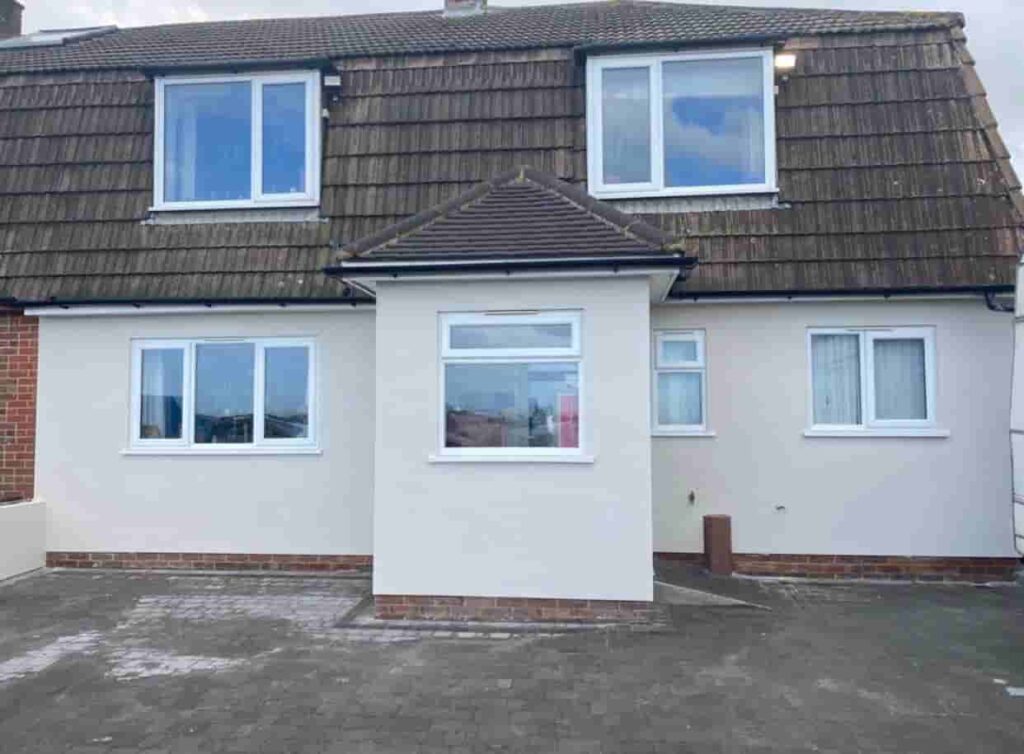Gable Roof Insulation and Energy Savings: A Smart Investment
Introduction: As homeowners, we’re always looking for ways to make our homes more energy-efficient, comfortable, and cost-effective. One often overlooked but highly effective way to achieve this is through gable roof insulation. Proper insulation keeps your home cosy in winter and cool in summer and translates into significant energy savings. In this blog post, BN Roofing Letchworth Garden City will delve into the importance of gable roof insulation and how it can lead to substantial energy efficiency gains.
Understanding Gable Roof Insulation
With their iconic triangular shape, Gable roofs are a popular architectural choice. However, without proper insulation, they can pose energy efficiency challenges. Gable roof insulation involves adding a thermal barrier within the roof structure to minimise heat transfer between the interior and exterior of your home. Here’s why it matters:
- Temperature Regulation: Insulation helps maintain a consistent indoor temperature year-round, reducing the need for constant heating or cooling.
- Energy Savings: A well-insulated gable roof can significantly lower energy bills by reducing heating and cooling costs.
- Comfort: Insulation enhances indoor comfort, ensuring that your home stays warm in winter and cool in summer.
- Environmental Impact: Reducing energy consumption is cost-effective and eco-friendly, as it lowers your carbon footprint.
- Moisture Control: Insulation can help prevent moisture buildup in your roof, reducing the risk of mould and mildew growth.
Types of Gable Roof Insulation
Several insulation options are suitable for gable roofs:
- Fiberglass Insulation: This common type of insulation is cost-effective and offers excellent thermal performance when properly installed.
- Spray Foam Insulation: Spray foam provides an airtight seal and superior insulation properties. It’s ideal for sealing gaps and preventing air leaks.
- Cellulose Insulation: Made from recycled paper and treated with fire-retardant chemicals, cellulose insulation is eco-friendly.
- Reflective Insulation: Reflective barriers, often made of foil, reflect heat away from your home, making it suitable for hot climates.
Benefits of Gable Roof Insulation
- Energy Efficiency: Gable roof insulation reduces heat loss in winter and heat gain in summer, resulting in lower energy consumption and reduced utility bills.
- Improved Comfort: Your home with consistent temperatures will be more comfortable year-round.
- Reduced Environmental Impact: Lower energy consumption means reduced greenhouse gas emissions, contributing to a greener planet.
- Increased Property Value: Energy-efficient homes are more attractive to potential buyers and may command a higher resale value.
- Healthier Living Environment: Insulation helps control moisture, reduces mould and allergen risks, and improves indoor air quality.
Conclusion: Investing in gable roof insulation is a smart choice for homeowners seeking to enhance energy efficiency, reduce utility bills, and create a more comfortable living environment. To achieve the best results, working with experienced professionals is essential. They can assess your gable roof’s insulation needs, recommend the right insulation type, and ensure proper installation. You can save long-term energy with the right insulation while contributing to a sustainable and comfortable home.
Call us on: 01462 411 099
Click here to find out more about BN Roofing Letchworth Garden City
Click here to complete our contact form and see how we can help with your roofing needs.

